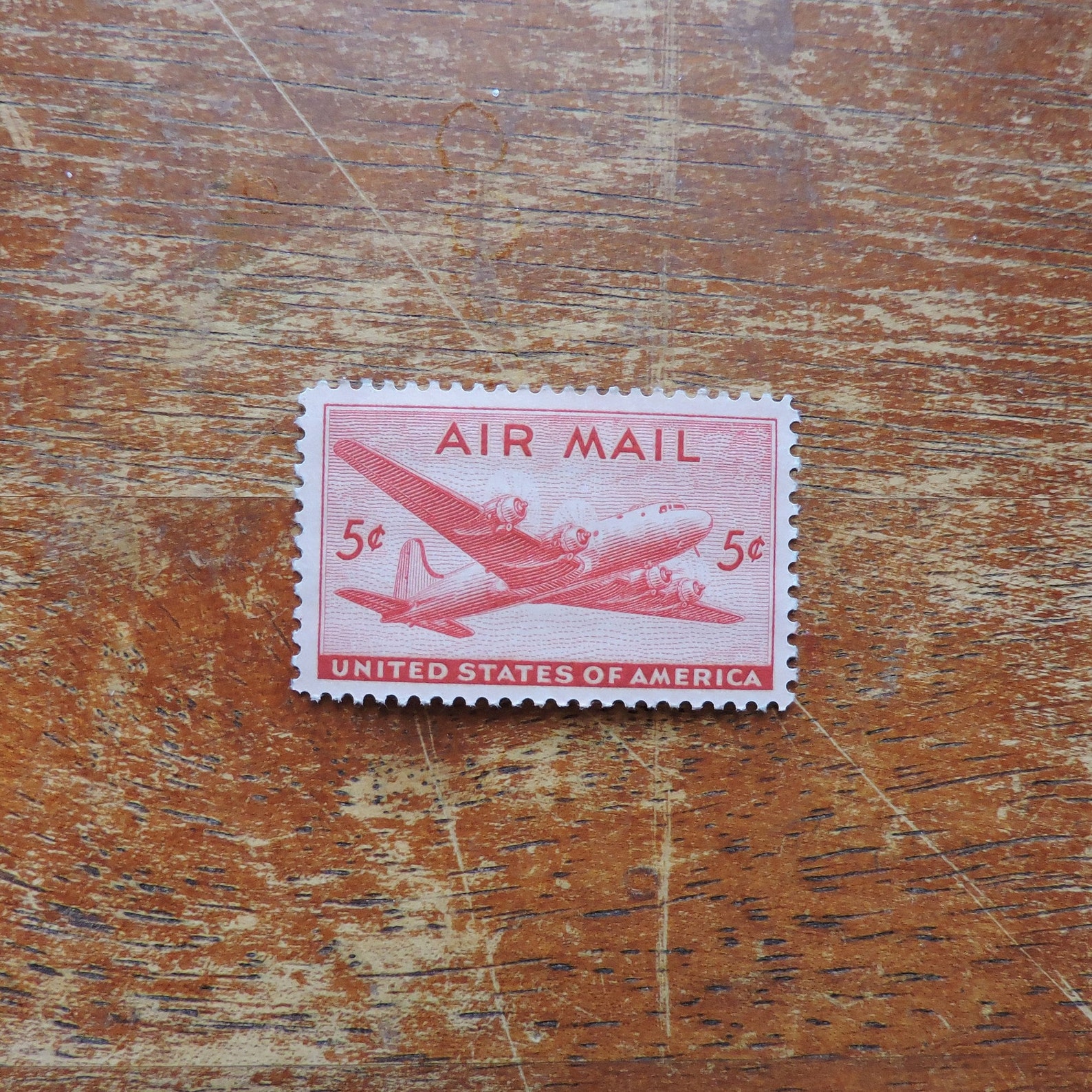

Red airmail 5 cent stamp registration#
This registered cover cancelled Tallinn to Helsinki, received is correctly franked to cover the 1.25 m foreign letter rate and 1.25 m foreign registration fee and looks plausible enough.

The following cover illustrates a potentially expensive pitfall for a buyer. The first issue airmail labels were never used again after March 15th 1920, and were demonetised on 1st October 1923 when they became the basis for the second issue of provisional surcharge airmail labels. After the Ice Flights, there were no more schedued airmail flights from Estonia until October 1923 (Tallinn-Riga-Königsberg and Tallinn-Helsinki). Mail prepared for airmail and posted on 15th March went by sea, and has a Helsinki back-stamp of 21 March. What turned out to be the last of the Ice Flights and the only one officially sanctioned took off from Tallinn on 15th March, after which the state of emergency was lifted. A red wax seal from the Tallinn Branch of the Eesti Tarvitajate Ühisuste Liit is on the reverse. The cover is franked to cover the 1.25 mark foreign letter rate and 1.25 mark foreign letter registration fee. Teetsoff (amongst other things, a well-known philatelist) cancelled Tallinn 13 March 1920 (first day of issue for the airmail label), to Manchester, with Helsinki transit mark 15 March and London transit mark 23 March. The only reliable key to identifying a genuinely used airmail label is the Helsinki receiving back-stamp of 15th March.īelow, a genuinely flown registered cover cancelled Tallinn 12 March 1920 to Helsinki (name of recipient excised), received 15 March, franked to cover the 1.25 mark foreign letter rate and 1.25 mark foreign letter registration fee.īelow, a genuinely flown registered cover from A. These were affixed to mail prepared for the 15th March flight but cancelled on a date prior to official issue. It seems that quantities of airmail labels were leaked by counter clerks to the public at Tallinn GPO (for cash!) on Thursday 11th and Friday 12th March. One printing, of which 238,315 were sold. Typo by Paalman, Tallinn, in sheets of 200 consisting of two panes of 100 each. All items were to be marked Õhupostiga (airmail).ĥ m label inscribed Eesti Õhu Post (Estonian Air Mail), designed by Karl Triumph, issued on 13th March 1920. Letters up to 15 g and postcards carried on the air service were to be registered, and have the 5 mark airmail fee paid before dispatch. Estonian Cabinet approval of a triangular airmail label design was given on 20th February, for public release on Saturday 13th March and official use on and after Monday 15th March. However, overheads were mounting and the need for an additional fee to cover the airmail costs was becoming clear. One of the pilots, Captain Jüri Ots, was later instrumental in the setting up of the regular Estonian airmail service. Between 60 kg of mail was carried on these flights.

Thereafter, a total of 23 ad hoc but regular mail flights (known as "Ice Flights") were made between Tallinn and Helsinki during the rest of February and early March, weather permitting, each carrying about 40 kg predominantly registered and diplomatic mail. On 11th February, one of the planes returned to Tallinn carrying 27 million Estonian marks which had been printed in Finland, and on 12th February the remaining two planes returned with 131 kg mail between them. However, on 7 February, three Estonian planes arrived unannounced in Helsinki, each with Estonian pilots and British instructors. Discussion between the two governments in early February reached general agreement for an airborne mail service to be flown twice a week. Neither Estonia nor Finland had private planes available, but a small number of British naval Avros and French naval Breguets were avalable.

Foreign mail was largely routed via Helsinki at the time and had been particularly badly hit, having been held up inbound and outbound for 5 weeks. In February and March 1920, persistent sea ice made navigation impossible between Tallinn and Helsinki, only 90 km apart.


 0 kommentar(er)
0 kommentar(er)
